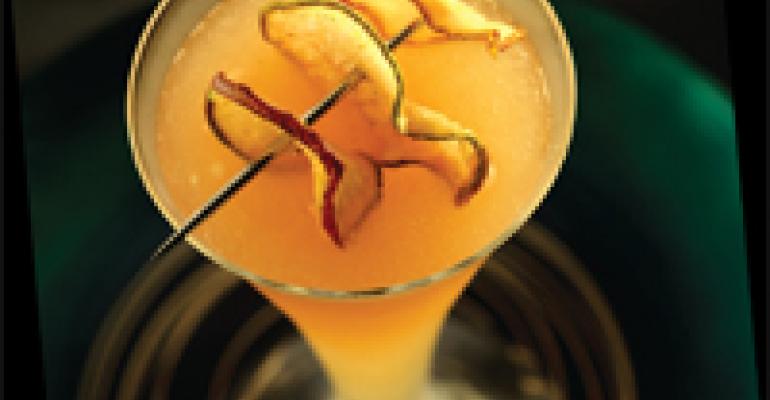 While there is no definitive etymology for the word “cocktail,” most scholarly tipplers agree that it likely emerged in the early 1800s. In the ensuing centuries, apothecary-like mixologists from around the world defined the art of the cocktail and in doing so, poured a libationary revolution. Recently, the cocktails of yesteryear have found renewed favor among modern palates, with a new generation of alcohol aficionados developing faithful re-creations and mindful interpretations of the drinks that came to be known as classics.
While there is no definitive etymology for the word “cocktail,” most scholarly tipplers agree that it likely emerged in the early 1800s. In the ensuing centuries, apothecary-like mixologists from around the world defined the art of the cocktail and in doing so, poured a libationary revolution. Recently, the cocktails of yesteryear have found renewed favor among modern palates, with a new generation of alcohol aficionados developing faithful re-creations and mindful interpretations of the drinks that came to be known as classics.
For decades, Eben Freeman has been educating, entertaining and serving cocktails, most recently at Tailor Restaurant in New York City. A much-lauded bartender with an impressive library of historic cocktail tomes (“more a cataloging of flavors than exact recipes”), he has a unique appreciation of the classics. “Americans are being more moderate in their consumption. They are making wiser decisions about what they'd like to consume, so people are certainly a lot more educated,” says Freeman. “I also think people want a more fulfilling experience out of their drinking, so therefore want something with a bit more flavor, or maybe a bit more story, character or excitement to it.”
In Cleveland, Paulius Nasvytis opened the Velvet Tango Room as a refuge for serious cocktail connoisseurs. “At the Tango Room, we define classic cocktails by not only being popular in a different period, but also there are certain parameters they tend to follow,” says Nasvytis. “The primary liquor is showcased; it's not disguised. If anything, it is put on a pedestal, it's enhanced. The ingredients are fairly simple, and it's an achievement of balance and the chemistry of the ingredients.”
Freeman and Nasvytis speak to the increased popularity of such classics as the Sidecar, Aviation, French 75, Negroni, Moscow Mule and Ramos Gin Fizz. In Portland, OR, Teardrop Cocktail Lounge co-owner Ted Charak views the Old Fashioned, Sazerac, Hemingway Daiquiri and Corpse Reviver #2 as “gateway drinks” that open the door to the world of cocktails. Like Freeman, he is unsurprised by the public's curiosity. “They are drinks to be appreciated versus drinks simply to drink,” says Charak.
Along with classic cocktails, ingredients and liqueurs that had fallen out of popular favor are returning. Mixologists are again using ingredients such as St. Germain elderflower liqueur, Domain De Canton ginger liqueur, maraschino liqueur, crème de violette, absinthe, tapache (pineapple wine) and Falernum (a sweet flavored syrup), in addition to an arsenal of housemade liqueurs, tinctures and bitters. “I will create a tincture not because I think ‘it would be cool to have this tincture,’” says Freeman. “It's because sometimes that's the only way to do it.”
Nasvytis agrees, also citing the importance of bitters to create balance and complexity to cocktails. “It's a tool to use judiciously and appropriately,” he says.
At Tailor, Freeman often works with chef Sam Mason, bridging the gap between classic cocktail and dinner plate. The pair has worked together to create absinthe gummy bears and Negroni “pearls,” where Mason uses cold oil spherification to turn Freeman's Negroni into tiny balls that resemble salmon roe. “One of your primary responsibilities as a restaurant bartender is to translate the language of the kitchen into the bar, and to represent what's going on with your chef because, no matter how popular you may become in your bar, the chef is the boss, the guiding force in a restaurant,” says Freeman.
Freeman and Nasvytis consider seasonality an important facet of designing a cocktail menu, and on the West Coast, a more moderate climate often allows for a greater degree of classic cocktail creativity using fresh produce.
“Generally, we look at what's coming into season, and we'll start thinking about what is going to go with that fruit or that citrus, and go from there,” says Charak, who also relies on a vast selection of housemade bitters and tinctures.
The Teardrop menu currently features a drink called the Minor Threat, made with Plymouth Gin, Aperol, lemon, rose bitters and a little simple syrup. “That's probably our best-selling drink,” says Charak.
Freeman hopes tastes and interest will allow bartenders to continue experimenting with flavors, breaking the rules and stretching their imaginations. “That's going to be the way this movement really survives, as much as the antiquarians think it's going to come from some overall interest in purity,” he says.





